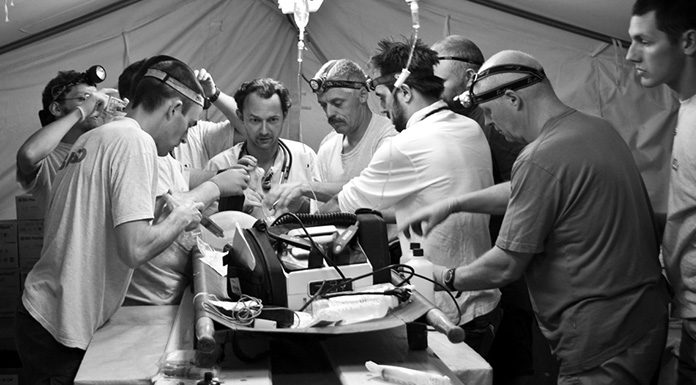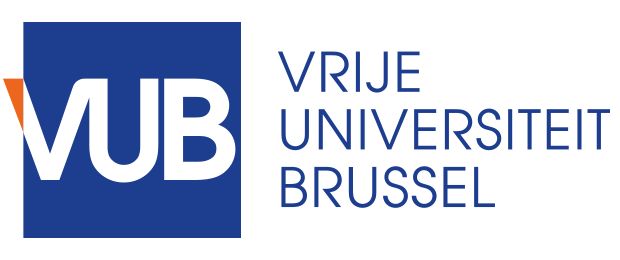
The Emergency and Disaster Medicine Group of Vrije Universiteit Brussel, Belgium, asks how academia can help manage mass casualty situations.
The Emergency and Disaster Medicine Group
One can no longer rely on goodwill and good intentions to manage mass casualties in a disaster situation. As in all other branches of medicine, disaster medicine must rely on a solid and evidence-based foundation. Disasters, whether natural or man-made, and the number of individuals affected by them are increasing yearly. The objectives of disaster medicine are to prevent, reduce and mitigate the effects of disasters on the health of affected populations, to restore health conditions to the pre-disaster situation, and to protect or re-establish health services and facilities.
Emergency versus disaster medicine
Health professionals must recognise that disasters are qualitatively different (rather than merely quantitatively different) from smaller events such as those encountered in daily emergency medicine practice. In contrast with these lesser events, disasters place community systems under extreme stress and responders face new and different demands. Thus, disasters may generate a whole host of problems for which routine emergency procedures are not well adapted. The management of the health effects of a disaster is one of the most difficult tasks that must be performed by health professionals by doing ‘the best for the most’ versus ‘the best for everyone’. It requires special knowledge and professional skill to provide healthcare of quality in a primitive or hostile environment (e.g. terror attacks) and an ability to innovate and organise a disaster medical response system.
Are we handling disasters as effectively as we think we should?
Several studies on medical disaster preparedness and lessons learned from recent disasters indicate a lack of education and training of the different parties involved in the medical management of disasters. Furthermore, health professionals and researchers from a broad spectrum of disciplines and specialties contribute to the knowledge base of disaster medicine science. Although multi-disciplinarity can be a strength, it can also be a hindrance due to the lack of mutual understanding between people from different backgrounds. Moreover, there is large variation in the organisation of the disaster medical response in different countries and even within countries. Without a standardised framework for describing and reporting the features that impact on disaster medical response, it is very difficult to compare results of disaster medical response evaluations and even more difficult to identify best practice. This lack of a common language also hinders intra- and interdisciplinary collaborations, appropriate training and the relationship between researcher and practitioner.
Looking for evidence: Standardised data collection
Disaster medical planning and response are only as good as the assumptions on which they are based. Many of these assumptions are incorrect and not based on systematically collected evidence. Our current knowledge of disaster medical management relies on expert opinions and individual descriptive reports, which often lack scientific rigour. Databases available for disaster medical research are underdeveloped, incomplete and inaccurate, and disaster medical response principles, concepts, structures and processes are not evidence-based.
Moreover, research that analyses the effectiveness and efficiency of disaster interventions on the health outcomes of disaster survivors is very scarce. One of the reasons is the fact that randomised clinical trials have been described as unable to accommodate the complexity that characterises disaster medical response, and are impossible or ethically unacceptable – or both – to be carried out in disaster situations. Nevertheless, there is an increasing awareness among the disaster medicine community of the need to collect empirical data derived from formal research or systematic investigations, to allow researchers to determine the effectiveness of disaster medical response interventions and the impact of the response on patient outcomes. This collection of consistent data should lead, over time, to the development of a consensus on, and validation of evidence-based processes and outcome indicators.
In a field of research where data will always be difficult to obtain – as most healthcare providers prioritise the provision of care to a large number of victims over the documentation of medical and operational management – the lack of universally accepted standards for collecting and reporting data will hinder, or render impossible, the comparison of research findings in different types of disasters or across different types of interventions. The challenge for further research is the development of a template for uniform recording and reporting medical data. Many initiatives have already been started but there is a need to start a consensus process including all stakeholders, in order to define a final set of medical data to be recorded and reported in disaster situations.
Simulation and modelling in disaster medicine research
Uniform medical data gathering and the identification of the key elements of the response will facilitate the development of conceptual models. These models are describing a comprehensive approach to managing the medical assets during an acute response and to co-ordinating across the various response tiers. Models and simulation, if used correctly, can support experimental research on disaster response management. Simulations using disaster medical response models can provide evidence-based data for an optimal use of resources when applying specific response interventions or procedures and allow comparisons of the efficiency of response interventions or procedures in order to define best practice, taking into account the contextual factors of the affected area and the specific disaster scenario.
Doing the best for the most
In conclusion, education and training in disaster medicine and management can only be done when a solid and standardised scientific basis is present. The cornerstone for a solid scientific basis is the collection of reliable experimental (medical) data. A lot of work has been done already, but there are still challenges for the future. Our ultimate goal will be doing ‘the best for the most’.









